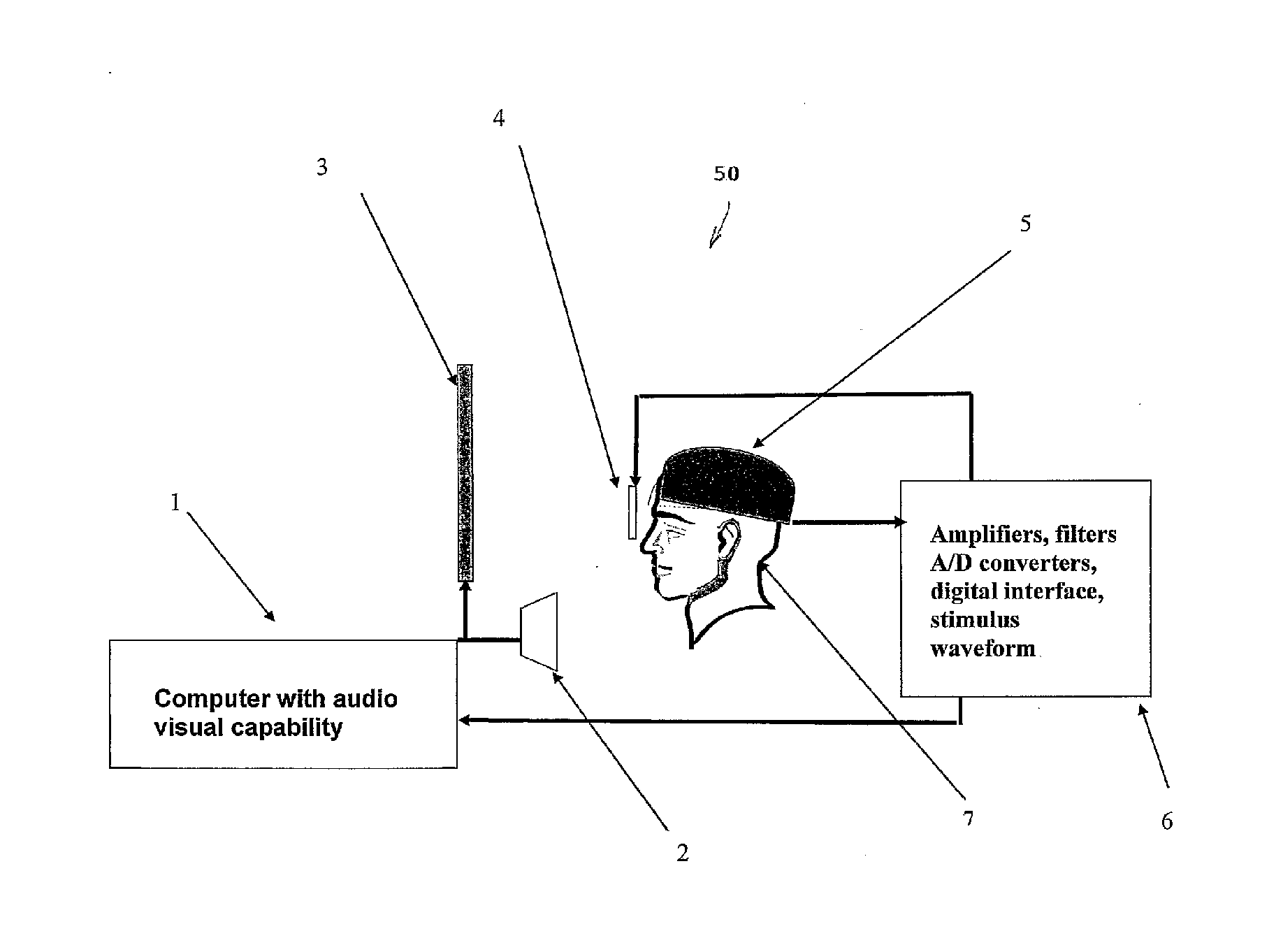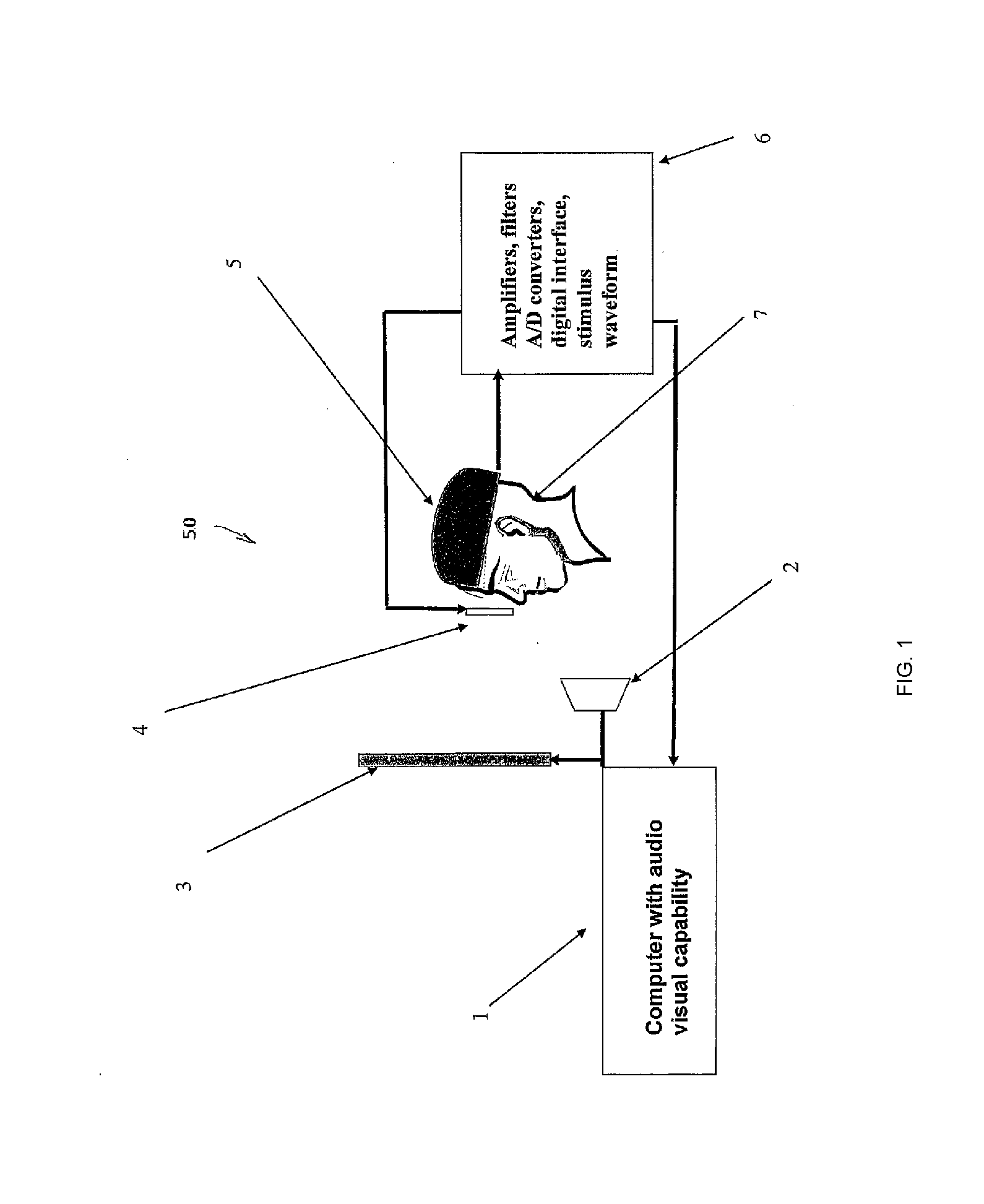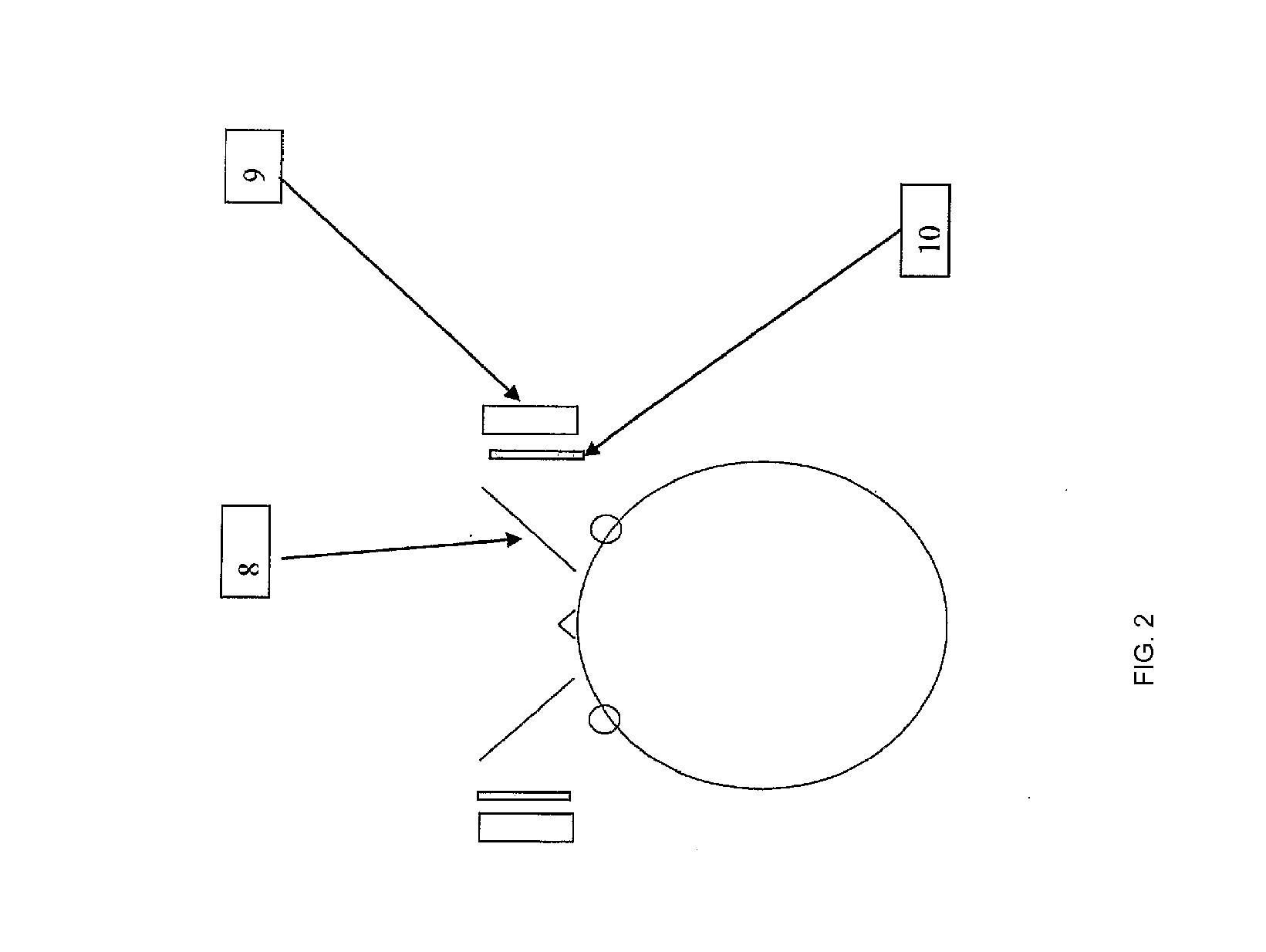Psychological Evaluation and Methods of Use
- Summary
- Abstract
- Description
- Claims
- Application Information
AI Technical Summary
Benefits of technology
Problems solved by technology
Method used
Image
Examples
example 1
[0105]The following procedure is used to evaluate the likely success of new entertainment material or the release of established entertainment material to a new target audience.
[0106]In this example, 50 to 200 participants drawn from the likely target audience for the test entertainment material are recruited into the study. All participants view at least one episode or part of the entertainment material at either one or more locations or in the home. In this Example, viewer engagement is important and accordingly the electrodes in the headsets 5 are selected so as to enable engagement to be calculated using the techniques described earlier. Brain activity is preferably determined using SSVEP or SSVER phase increase. The engagement measures of the target audiences were separated into males and females and the results were plotted graphically in FIG. 4. FIG. 4 shows the engagement measures for the male and female audiences for five different types of programs, drama, travel, food, ro...
example 2
[0111]The invention can also be used to determine the psychological impact of various actors which are featured in entertainment material. This example is similar to Example 1 except that it is not necessary that the target audience has viewed an earlier episode of the entertainment material. Also the electrodes are selected so as to enable assessment of engagement, like-dislike, memory for detail and verbal features, memory for non-verbal features and emotion, and emotional intensity. Again, SSVEP or SSVER phase increases are preferably measured using SSVEP or SSVER techniques. In this example, a segment of entertainment material has three different actors, Actor 1, Actor 2 and Actor 3 featured therein. Pooled responses are plotted graphically in FIG. 5 for the various hypothetical measures. It is apparent from FIG. 5 that Actor 1 scores high on engagement, likeability and emotional intensity. This indicates that the audience is able to identify with the Actor 1 (indicated by high ...
example 3
[0112]The invention can also be used to select an actor for a specific role. In this application, each of the possible actors is required to read the same script or act the same role. SSVEP or SSVER phase increase is then recorded from the test audience while viewing each of the applicants for the given role. Depending on the nature of the role (e.g. hero, villain, etc.) the actor most effectively eliciting the desired psychological response would be selected for the part. Most relevant measures for the central characters would be engagement, like-dislike, and emotional intensity. If the role also has an educational or information transfer component, long-term memory encoding would also be important.
[0113]It will be appreciated by those skilled in the art that the method of the invention compares very favourably with known techniques for evaluating the likely commercial success of entertainment material, suitability of actors or suitability of persons for public office. In the case ...
PUM
 Login to View More
Login to View More Abstract
Description
Claims
Application Information
 Login to View More
Login to View More - R&D
- Intellectual Property
- Life Sciences
- Materials
- Tech Scout
- Unparalleled Data Quality
- Higher Quality Content
- 60% Fewer Hallucinations
Browse by: Latest US Patents, China's latest patents, Technical Efficacy Thesaurus, Application Domain, Technology Topic, Popular Technical Reports.
© 2025 PatSnap. All rights reserved.Legal|Privacy policy|Modern Slavery Act Transparency Statement|Sitemap|About US| Contact US: help@patsnap.com



